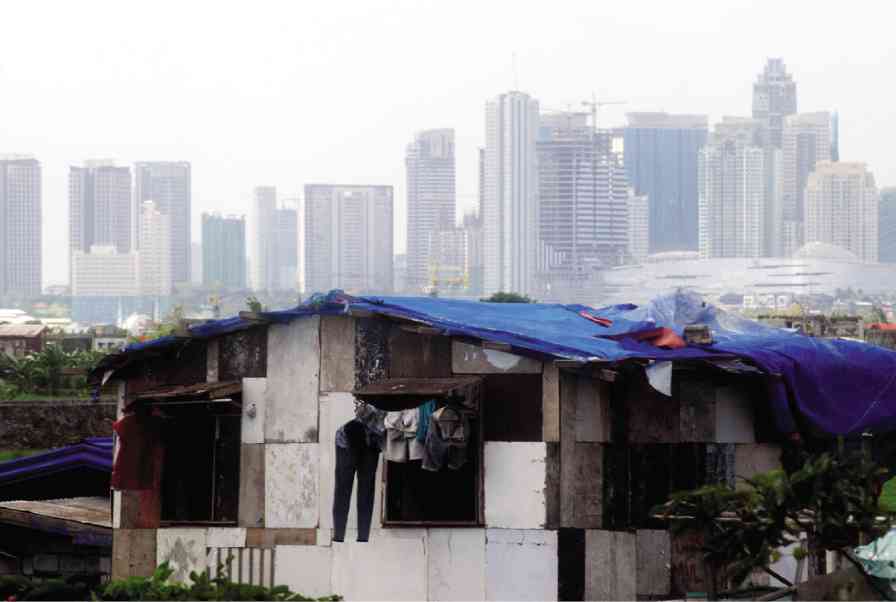Give them homes but not in usual relocation sites

THE INCREASINGLY concentrated poverty in informal urban settlements is one of the consequences of urbanization. Photo by Arnold Almacen
First of two parts
Urbanization of cities and the formation of large informal settlements go hand in hand. This has been a challenge for the Philippines as it tries to industrialize, achieve social improvements and better quality of life for its people.
However, rapid urbanization is often an overwhelming management and financial challenge for both the national and local governments. The increasingly concentrated poverty in informal urban settlements is one of the consequences of urbanization.
Take for example Metro Manila, which is the country’s most populous—at 11.5 million inhabitants—and most urbanized area. However, it is also home to 2.85 million individuals or 570,000 families living in the squalor of informal settlements, according to the United Nations Children’s Fund (Unicef).
“This is about a quarter of Metro Manila’s population with no inadequate access to safe water and sanitation, living in substandard houses as well as overcrowded communities, suffering from hunger, poor health and exposed to high levels of crime,” said Paul Tanchi, national president of Subdivision and Housing Developers Association (SHDA), the largest organization of real estate developers in the country.
Relocate
One of the few options available to these informal settlers is to relocate them to safer but usually far locations. This is particularly being done to the 60,130 families illegally living in waterways as a number of them are currently being resettled to Trece Martirez in Cavite and in San Jose del Monte, Bocaue, Norzagaray and Pandi in Bulacan.
However, this is just a portion of the number of families in Metro Manila—estimated to at 104,219—who are illegally living in dangerous locations like near a fault line, under high voltage tower, prone to landslide, fire or chemical hazards.
Tanchi said: “Despite the efforts, the number of those families living in informal settlements continue to grow because of rapid population growth, plus the fact that many of those already relocated families eventually go back. The situation is compounded by those migrating from the province, who believe that jobs are more likely to be available in the city.”
Futile
Indeed, uprooting these families from their source of livelihood has proven futile. “This is the reason a lot of those relocated families end up going back to their former addresses. So how do we prevent this while still providing decent and affordable housing to these underprivileged families?” Tanchi said.
In a plan being proposed by SHDA and other stakeholders, private developers are ready to offer undertaking and financing the construction of the socialized medium-rise buildings (MRBs) on turnkey basis as well as provide assistance in the evaluation, processing and documentation of loans for program beneficiaries.
Architect Jose de Guzman, SHDA senior adviser to the board of governors, said: “The key here is the participation of the both national and local governments as the socialized MRBs that we will build on the needed pieces of land—particularly those government-owned in-city land (for example, those located within Metro Manila). As we all know the cost of private lands here in Metro Manila is prohibitively high.”
(To be continued)
